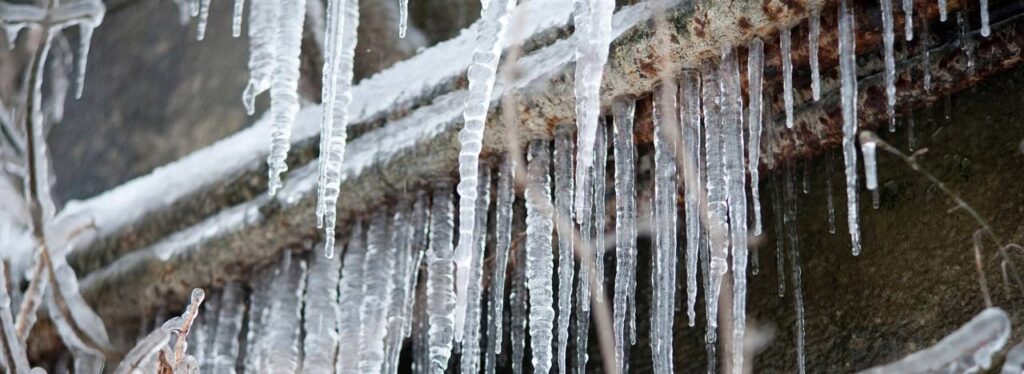Important Advice to Prevent Frozen Plumbing in Cold Weather: Expert Insights
Call TodayThey are making several great annotation about How to Prevent Your Pipes From Freezing as a whole in the article following next.
:strip_icc()/snow-outdoor-faucet-pipes-4af65d1e5e904fb1aa7bf74071fe5d89.jpg)
Winter can wreak havoc on your plumbing, especially by freezing pipes. Right here's exactly how to avoid it from occurring and what to do if it does.
Intro
As temperatures drop, the threat of frozen pipelines rises, potentially resulting in costly repairs and water damage. Recognizing how to stop frozen pipelines is important for home owners in chilly environments.
Prevention Tips
Insulating prone pipelines
Cover pipes in insulation sleeves or make use of warmth tape to protect them from freezing temperatures. Concentrate on pipelines in unheated or external locations of the home.
Home heating techniques
Keep interior spaces effectively warmed, specifically locations with pipes. Open up cabinet doors to permit cozy air to circulate around pipelines under sinks.
Exactly how to identify frozen pipelines
Try to find decreased water flow from taps, uncommon smells or sounds from pipes, and visible frost on revealed pipes.
Long-Term Solutions
Structural adjustments
Think about rerouting pipes away from outside walls or unheated areas. Add additional insulation to attic rooms, basements, and crawl spaces.
Updating insulation
Purchase top notch insulation for pipes, attics, and walls. Correct insulation helps maintain regular temperatures and minimizes the risk of icy pipes.
Shielding Outdoor Plumbing
Garden pipes and outdoor faucets
Separate and drain yard hoses prior to winter months. Install frost-proof spigots or cover outdoor taps with insulated caps.
Recognizing Frozen Pipes
What creates pipelines to ice up?
Pipelines ice up when subjected to temperatures below 32 ° F (0 ° C) for expanded durations. As water inside the pipes freezes, it expands, taxing the pipe walls and potentially causing them to burst.
Threats and problems
Icy pipes can bring about supply of water disruptions, residential or commercial property damages, and pricey repair work. Burst pipes can flood homes and trigger extensive architectural damage.
Indications of Frozen Water Lines
Determining icy pipelines early can prevent them from breaking.
What to Do If Your Pipes Freeze
Immediate actions to take
If you think icy pipelines, maintain taps open up to ease pressure as the ice melts. Make use of a hairdryer or towels taken in warm water to thaw pipes gradually.
Final thought
Preventing icy pipelines requires proactive actions and fast feedbacks. By recognizing the reasons, indicators, and safety nets, property owners can safeguard their pipes during winter.
6 Proven Ways to Prevent Frozen Pipes and Protect Your Home
Disconnect and Drain Garden Hoses
Before winter arrives, start by disconnecting your garden hoses and draining any remaining water. Close the shut-off valves that supply outdoor hose bibs and leave the outdoor faucet open to allow any residual water to drain. For extra protection, consider using faucet covers throughout the colder months. It’s also important to drain water from any sprinkler supply lines following the manufacturer’s directions.
Insulate Exposed Pipes
Insulating your pipes is an effective way to prevent freezing. Pipe insulation is readily available at home improvement stores and is relatively inexpensive. Pay close attention to pipes in unheated areas such as the attic, basement, crawl spaces, or garage. Apply foam insulation generously to create a buffer against the cold. You can also wrap your pipes in heat tape or thermostat-controlled heat cables for added warmth.
Seal Air Leaks
Inspect your home for any cracks or openings that could let in cold air. Seal any holes around the piping in interior or exterior walls, as well as the sill plates where your home rests on its foundation. Additionally, make sure to keep your garage door closed unless you’re entering or exiting. Leaving it open creates a significant air leak that can lead to frozen pipes.
Allow Warm Air Circulation
During cold snaps, it’s essential to allow warm air to circulate evenly throughout your home. Leave interior doors ajar to promote better airflow. Open kitchen and bathroom cabinets to help distribute heat consistently around the rooms. If you have small children or pets, be sure to remove any household chemicals or potentially harmful cleaners from open cabinets for safety.
Let Faucets Drip
A small trickle of water can make a big difference in preventing ice formation inside your pipes. When temperatures drop significantly, start a drip of water from all faucets served by exposed pipes. This continuous flow helps prevent the water from freezing. Additionally, running a few faucets slightly can relieve pressure inside the pipes, reducing the chances of a rupture if the water inside does freeze.
https://choateshvac.com/6-proven-ways-to-prevent-frozen-pipes-and-protect-your-home/

We hope you liked our article on Preventing and dealing with frozen pipes. Thank you for taking a few minutes to read through our short article. Appreciated our blog? Please quickly share it. Let somebody else find it. We love your readership.
Request Estimate